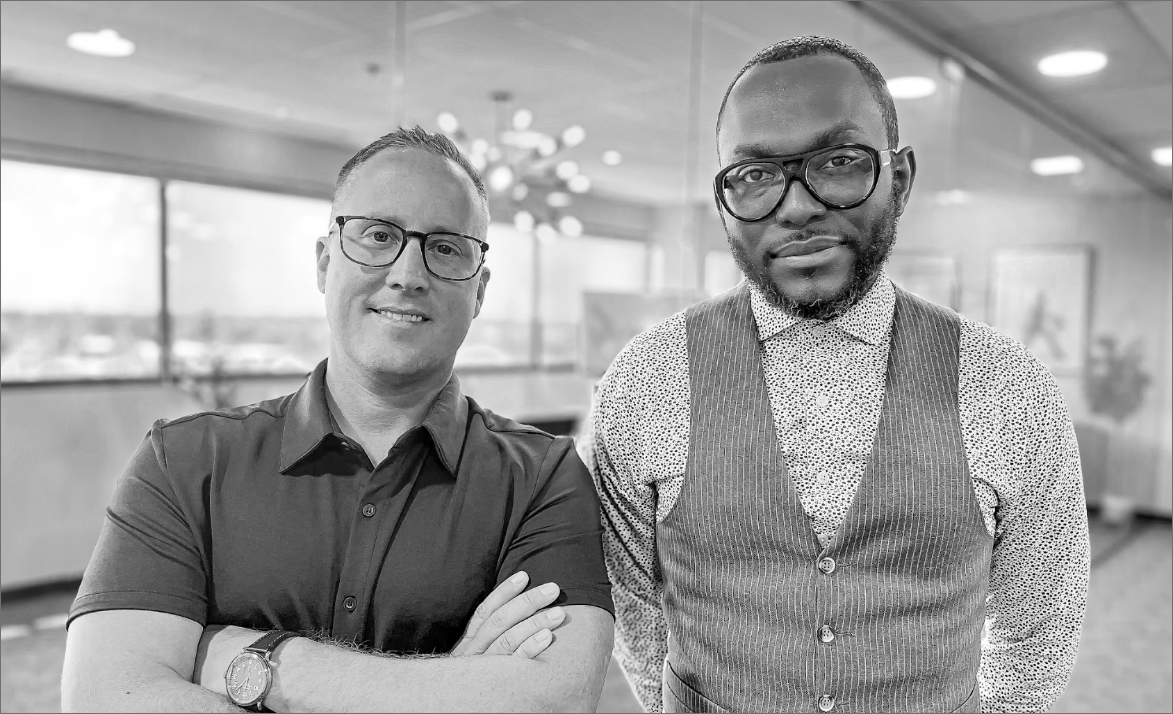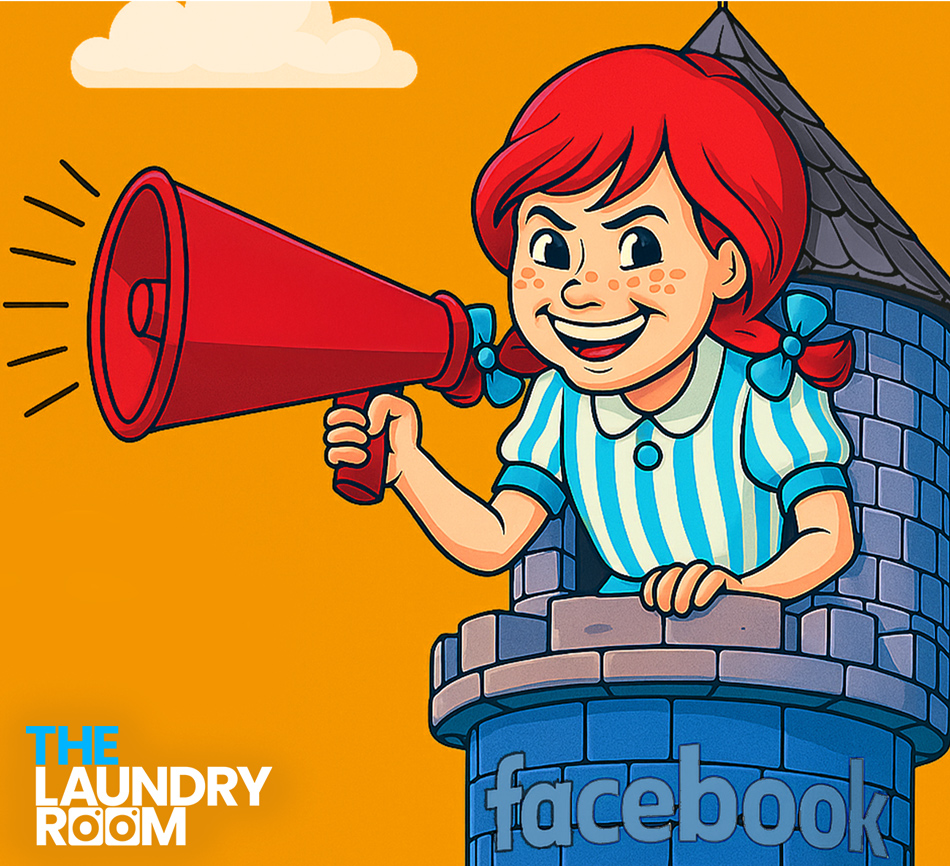00:22 – 26:10
Mike, what do you think of my jacket? You can be honest.
Uh, you know, I saw, this is, I like-
The second time, this is the second time I broke it out, by the way. I got it for Christmas.
Uh, did you get it at the same time that you got the jacket you wore yesterday?
26:13 – 46:19
Uh, no. I’ve had that one.
I like that one.
That’s a good one, that’s a double. That’s a, you could break it apart, and it’s a spring kind of jacket. This jacket, a little bit of a Yellowstone vibe.
Okay, I can see that, a little Costner.
Uh, got it for Christmas, felt really special about it. Was like, Aim,
00:46 – 01:09
where’d you get this? Found out, and this should have nothing to do with how sweet the jacket is, but it was from Costco.
This is a Costco jacket.
Even sweeter now, you love Costco.
Was out to dinner, saw another dude wearing the jacket.
Same jacket.
I didn’t have the jacket on luckily. But yes, it was this jacket.
Is it warm?
Very warm, very comfortable.
01:09 – 01:36
I feel like it’s kind of like a shirt.
Yeah, man. I dig it. I dig it.
I think it’s so important to feel good with what you have on.
I was feeling pretty good yesterday.
You look good.
New biz.
Yeah, you look good.
That’s what I was. I mean, we had to do some new biz in the middle of the snow storm. But once we got there, that’s what I was saying.
01:36 – 01:58
Being in the lobby again, waiting for someone to come get us. I love it. Text, hey, we’re here, guys.
Come get us. We’re at the door. That’s good stuff.
That is. The new sales model or reality, you don’t get to do that much.
And that’s the thing. How many times, how many meetings did we have before finally getting to go?
01:58 – 02:38
Yeah.
Four?
Yeah, at least.
Ish?
At least. And we’re still in SQL to close.
Yes, absolutely.
The account is not ours.
Yep.
The opportunity is there. And the work that is necessary to actually close it is one of the most underestimated activities facing every company, every B2B company, certainly, professional services, that work that you need to do after someone shows interest, after they say, yes, I actually need that.
02:38 – 03:02
Oh, by the way, I like you guys.
The job’s not done.
So got this lead off of a past employee, which is so awesome, right? Like to have someone come work here, leave, jump around a little bit, and still in good graces, know we do good work, like very positive. So gives a referral, meet once, so makes the intro.
03:02 – 03:30
And when she made the intro, it was just him and I, VP of Marketing and I on a Zoom. And it was, hey, this is what we’re thinking. There’s no RFP, there’s no documentation.
Hey, what, you know, it’s very broad stroke. This is what we’re looking to do. We need a new website.
And to the sales process of this, the very first call was, call it 20 minutes.
03:30 – 03:51
And I broke out the web dev options or the web options. Hey, man, we got package one in the 15 to 20.
We got package two in the 40 to 60. And we got package three in the 100 to plus. And I think it went a really long way with them out the gate, because that’s what he wanted to know.
03:51 – 04:13
Like, and he didn’t come out and say, all right, so what are we looking at? Right? Like, it’s a little tacky, I think still, right?
Like, maybe a little insecure about it. But we both knew what what are we looking at? Like, this is what I’m trying to do.
And I don’t know that intro call. Like, I didn’t know if he was thinking, hey, give me a what do we call it? A refresh.
04:13 – 04:37
I’m looking for a refresh.
No such thing.
Yeah, right. Or is he really looking to take a bite of this and change things? And being up front with the pricing and how we work up front and not hold, like, I gave everything.
Hey, man. And here’s the differences. These kind of websites work off of templates, and we’re going to automate a lot of stuff, and it’s going to be more brochure style.
04:37 – 05:04
These have deep integrations. High compliance, high SEO. We do a lot of work into what you look like.
Everything’s custom. And it let him place himself. And I think doing that out the gate, helped the trust.
Like it was instant, all right, these guys are legit. They’re not trying to shooby-doo. The fact that we’ve done work similar, obviously, is a huge benefit.
But yeah, good experience.
05:04 – 05:26
But I think yesterday, when we met, it was, we learned a lot more. I think a lot of the times these, and we can talk about this a little bit, like the ask is masked by something else, right?
Like it ain’t just a website. There’s a lot more going on. And who’s the website for?
We got into this a little bit. Like is this for your internal team?
05:26 – 05:53
Is this for recruitment’s huge?
Is this for people looking to work with your organization? Is this for prospects? And it’s yes, right?
It’s yes to all, but that’s deep. That’s a deeper ask than, oh, I need a new website or I need a website refresh.
The challenge with, I think the challenge for marketers understanding or empathizing with sales folks, and then vice versa,
05:54 – 06:44
the problem for sales folks, empathizing with marketers, is you’re always in discovery, right? You’re still in discovery mode. So even though a prospective client has says, yep, what you’ve shared, that’s what I’m looking for, that’s what I need, and you think you have all of the intel, you don’t.
But you’re always in discovery. Even after you close the deal, and you have your official discovery, that work has multiple iterations to it. And the better you can be honest and upfront about that with yourself, and with that prospect, the more trust you build, the more confidence that they’ll have, the more legitimate you appear, so that you can deliver ultimately value.
06:44 – 07:11
At the end of the day, that’s what every business is trying to do, right? Is find that balance between relational outcomes and transactional outcomes.
Yeah, in that transactional piece, I mean, sometimes I wish we were in that business. The culligan man, here’s your fresh water.
We talk about that often.
Freshed up every day, never see me,
07:12 – 07:37
but it is not that. I mean, it couldn’t be farther from that. And that’s a good way to look at it, that constant discovery.
As soon as you quit being curious.
That’s the beginning of the end.
And the culligan man, Absol Pure, that’s funny, because that is, I think, one of the greatest business models of all time. A delivery driver of jugs of water delivered to be put on your little stand,
07:37 – 07:58
and then they get the empty ones and put new ones. What a great business model.
We don’t have them anymore. Like, were they going above and beyond the water game? I think I saw their truck say that they do coffee as well.
But like, are they teaching us how much water we should drink? Are they, all those other things that are like the plus ones to make it more relational,
07:58 – 08:14
it’s just a transaction. Easy to get rid of.
Oh, we’re gonna start filling, we’re gonna get a Brita. And are we gonna drink as much water with the Brita? No, maybe not.
Would it have been better for everybody if we would have kept that? Maybe. No one’s telling us, though.
Man, that’s a good point.
08:14 – 08:52
I was gonna say, a company who I think does a good job at evolving how they stay relatable is WeatherTech. When those guys came out, it was about mats for your car.
It’s custom, exact fit mat.
Now these guys are selling mats for your house. Coffee cup holders, right? And it’s that ongoing discovery of what does our customer care about?
And then do we have something? Can we evolve enough to meet them where they care?
08:52 – 09:18
And a lot of companies stop doing that work.
They might do it initially, right, to have a viable product or service, but then they stop, and they don’t give attention to that. I think where I get most of my fulfillment and gratification in the work we do is we’re always trying to figure out what’s next. Yeah, how do we evolve?
How do we remain relevant to the customer we’re trying to serve?
09:18 – 09:41
And that’s tricky, right? Because you can’t be all things to all men, even though that’s a knee jerk.
You know, you want everybody that you come in contact with to be happy and to value what you do. That’s not possible. So you have to find who your audience is and niche as much as you can.
But in that niching, the needs of that person or that group continues to evolve.
09:41 – 10:14
And if you’re not doing the work in your biz to figure out, all right, they raised their hand, they’re interested in what we do, now what?
And I think that’s the biggest struggle that everybody has today is like the now what? And the amount of content required to like pour into that today is just it’s 10x, what 50x of what we used to get by with sending a postcard once a month or once a quarter, or I don’t know, oh, hey, that’s the holidays.
10:14 – 10:38
We’re gonna start seeing the commercial on TV for the Hershey Kisses.
And that kind of rode these seasons for them. But now it’s so much like, I don’t know, we’re exposed to so much more now that I feel like the work required to penetrate or get through, or WeatherTech’s a great example of this. Our favorite mattress, Purple.
10:38 – 10:57
Purple Mattress, man. Those guys were, before anybody was doing it, they had a team of guys just making video. Like, how many investors thought they were nuts?
What do you got, all these people? Imagine before they were profitable, and they were like, hey guys, we’re gonna need an additional 3.5 mil to go hire
10:57 – 11:24
in-house storytellers for the Purple Mattress.
Yeah. They likely had more content creators than they did salespeople.
Heck yeah. Heck yeah.
Yeah. And that is the change now. That sales teams, the sales group, is no longer a one trick pony.
You have to be a bit of a utilitarian. You gotta know how to post a LinkedIn thing.
11:25 – 11:44
You gotta know how to shoot a video from your phone.
You gotta know how to follow up with a prospect in a way that’s meaningful. Texting now, not hiding behind email.
I was talking to Crank this morning. He’s so good at all the things you just listed, and he just has it. He’s good at that.
11:45 – 12:10
He’s already getting momentum in the new biz front.
Yeah. Crank, member of our team here at our agency, certainly an invaluable team member.
But Account Man.
Yeah.
Account Man turned interested in sales, like already getting it because of that. I think it’s twofold, though. I think one of it is, like, and, you know, on the older regime of sales folk, they don’t believe in it.
12:10 – 12:49
They don’t think that that works or… Yeah, I think there’s a belief, a trust factor going on of, oh, yeah, we don’t mess around on Facebook and LinkedIn and blah, blah, blah. That just ain’t me.
But I think just as to blame is the companies that they work for. Like, I don’t think organizations are doing anywhere near what they should be doing to promote their sales folk in providing them content that can be shareable. Because I do think a lot today, too, is that microphone now is way more effective as Michael Taylor or Nick than it is for SSDM.
12:49 – 13:11
Sure, sure.
We’d get way more traction on social media if we’re going to stick to social for a second. Like, social media is people to people. It’s not business to people.
And if you’re not doing things to help promote an environment for your sales squad, to make it incentivized, make it easy, make it fun, make it interesting, make it a competition,
13:11 – 13:42
why would they? Why would they do it? And to have these guys ride it out, like they’re just not willing, certainly the older.
Speak to this for me. I think a reluctance that companies have with promoting their sales team are some of the obvious things. Turnover, it’s hard to keep talent, hard to keep talent that you are, when you hear I should be investing in their persona or in their personal brand.
13:42 – 14:36
A lot of companies are sheepish to do that for obvious reasons. Speak to how a company could straddle those realities. Arm them with, and give me tactically what they could do to help both insulate themselves from the inevitable turnover, but also evolve how they are selling to customer.
Happy to. First part of that though, where I don’t agree with the original statement, and you’re right in the mindset that they have, but if I went to sale, let’s say I got a sales gig, and I’ll try to get Windows. I do Windows.
I’m selling Windows now. I go to work for Window Company A, and these guys, day one, set me up
14:36 – 14:57
with content that I can go start sharing stuff on social. They dedicate a portion of my day to create new content for my audience.
All of a sudden, I’m building up this pipeline, getting deals, loving it. How likely am I going to go when Window Company B calls and says, hey Nick, we see you’re really crushing
14:57 – 15:20
it at Window A. How about you come over here?
Okay, what you got? Oh, you ain’t doing social. You ain’t empowering your people to spend time on this on a regular basis.
How am I going to get my bit? So that’s the first part of this. I think it’s a retention play.
All of a sudden, I got all this content going out and my friends and family are saying, yeah, I see you’re in Windows now.
15:20 – 15:36
I see your stuff all over the place. Yeah, my company’s great.
We’re great. We do awesome work. I think it’s the thing that’s getting in their way of, oh, we’re going to invest all this money and then they’re going to leave.
No, I think you invest this money and they’re going to want to stay.
15:36 – 16:12
If you can get them more money, more sales, more opportunities, I think that is the way to do it.
So, I’m going to play devil’s advocate here. Sounds great, Nick. That’s a grand idea.
So what? You’re asking me as a company to build an army to create an army of content. That’s not real.
What are some of the things that a company should be looking into to chip away at that?
16:12 – 16:42
I think the biggest thing for me is I think, and COVID, I think accelerated this in a major way, but I could be better, and I could get some more data on this, and I should, we should do that. I can come in next time and have some numbers with it. And I do have some of these, but I don’t feel confident enough in sharing some bullshit numbers.
But when we start, when we started this, oh, eight, we make 50 calls a day.
16:42 – 16:58
We could set up two to three appointments. You make 50 calls today, you’ll be lucky to talk to one dude.
There’s software out there now that calls like 10 people at the same time. We’ve talked about this a little bit. Software literally that rings 10 numbers at the same time because it knows only one of them is going to pick up.
16:59 – 17:21
So as soon as the one guy picks up, it drops the other ones, and then you take the call. So now it’s not 50 calls. You need AI or some sort of app to increase your volumes to get the same results.
Now, okay, cool. I think that is strictly on the fact of how we’re, as buyers, are communicating with salespeople. In bottom line,
17:21 – 17:49
tons of numbers on this.
Buyers do not want to talk to salespeople anymore. And sorry, sorry, they don’t want to talk to you anymore. They want to get educated.
99% of the way they’re doing independent online research. They don’t want to talk to anybody. Maybe people in-house, like their own colleagues, but they don’t want to take eight meetings with eight different agencies or eight different vendors or eight different anything.
17:49 – 18:10
They want to learn as much as possible on their own, almost make the decision, and then like what we did yesterday. All right, let’s have these guys in and make sure they’re like legit, right?
Make sure we like them.
Make sure we like them. Make sure they actually can show up on time to a meeting and know how to wave and smile and say hi and have manners, good manners.
18:10 – 18:35
So for these Salesforce, for these organizations of like, yes, sounds good, what else are you going to have these salespeople do?
Cold call? So you would rather have your sales squad cold call from 9 to noon rather than cold call from how about let’s say 1030 to noon and spend that first hour and a half on building your brand business
18:35 – 18:58
because it’s not like Jimmy the sales guy is going on there talking about the lion. Yeah, right.
Like he’s in there to he wants to talk about windows. Yeah, totally. He wants to get something for his efforts too.
So that’s where I’ve been perplexed a little bit. And I, you know, trade shows are still a thing that I, it’s so funny when people come to us and they’re,
18:58 – 19:17
hey, so all right, we’re going to give you this money. We want to know to a dime what we’re going to get back for it.
Okay, no problem. We do that. That’s our work.
But when we peel that back a little bit and we’re like, oh, so you’re giving us an eighth of the budget that you spend on trade shows annually.
19:17 – 19:48
Can we see some of the data on what that yields? Well, you know, and that is sales driven.
I do think that a lot of these organizations are driving their decisions, the decisions they make based on recommendation of sales people who don’t really aren’t really up on what today’s buyers look like. How are people buying today? And I have no problem talking about this because I think I am a sales guy.
19:48 – 20:10
I’m more of a sales guy than a marketing guy. But like, heck, I don’t do 50 cold calls anymore. I make calls and I make cold calls, but they’re strategic cold calls where I clearly understand there’s a need that I can have an impact on.
Don’t give me a list. Give me a list of blinds to just call and to what?
20:11 – 20:44
Like, if I can’t go in with something, and that’s where I think, that’s where I’m perplexed of like, okay, you don’t want them to do this.
Instead, what are they doing? And most of the time, it’s, they’re making outbound meetings and not just cold calls, but outbound LinkedIn messages and outbound emails to strangers one-on-one or mass and not doing anything to position themselves as thought experts, thought leaders, experts in their field.
20:44 – 21:15
And I can see that being tough for a sales guy, to be honest.
Like if that was all my gig was, I would be a little reluctant. AI, AI would freak me out. And we see this.
Marketers do it too. Everybody’s got the ax on AI. Oh, yeah, it’s cool, but.
Dude, if you’re not looking at this stuff realistically, like if you’re not looking at it and how it can impact your biz, you are in a rude awakening. Employee too. Forget the organization.
They are as well.
21:15 – 21:39
But I’m talking about you, sales guy, marketing guy. You guys got to be all over this stuff.
And if you don’t, you will be lapsed by a 20-year-old kid coming out and wiping you off the map. And it’s met with a lot of pushback, a lot of fear of the unknown.
Yeah, I think there’s insecurity in not knowing.
21:39 – 22:02
I don’t know what I don’t know. So it’s easier for me to do nothing than to try something.
Yeah, absolutely.
Or not do nothing, but do what I’ve always done. That’s a, hey, I know this is going to yield this.
Hold.
Hold. Yeah, totally. Hold.
Yeah, yeah, yeah, yeah. So, okay, so mindset.
22:02 – 22:33
You just spoke to that first order of business for company who needs to make this change.
You got to change your mindset of what your sales team should be doing. After that, we know there are tools. There’s a new tool coming out every day that’s helping to either increase efficiency or volume of activity.
So now a single person has the power of 10 because of these tools they can use.
22:33 – 22:56
How would a company determine whether or not a tool is right for them? You know, I think there is the investment side of salesperson saying, hey, we should be using Videard because I want to create some videos, or we should be using Sales Genie.
You know, side note, we’re dropping all these names. We’ve got to call these guys.
22:56 – 23:24
They should sponsor our conversation.
I think we need more than our family members watching the podcast.
Fair enough. Fair enough. That’s what to do.
But all this thing.
Well, to that point, though, Mike, how many I don’t talk to them. I don’t talk to a lot of businesses who have a process for their sales folk.
Oh, absolutely.
So step one, you need a inquiry to MQL, to SQL, to close process.
Right.
23:24 – 23:44
Hey, we give price on call one. We don’t give proposals until we have bop, bop, bop, bop, and we’ve toured their location. No one’s doing that.
You got Jimmy, who does it this way, Jan, who does it that way, and all we’re looking at is the numbers at the end. And we go, oh, Jimmy had a great quarter.
23:44 – 24:16
Way to go, Jimmy.
Be more like Jimmy. Well, Jimmy’s been doing this for 20 years. Jimmy’s got a referral network that feeds 90% of his pipeline.
Jan just started five years ago from another agent, from another industry. No. Like, of course, Jim’s going to kick her butt every single time.
So step one is get a system or a process down of how you’re going to intake leads to your business and convert those into a sale.
24:16 – 24:37
I think that’s first, which would lead you down to what it is and what it isn’t. Hey, we’re not going to zoom with people after two zooms.
Okay, you can zoom one and zoom two, but third time, if we don’t meet face to face, we can’t go to step four. No one has got the cojones to do that yet.
24:37 – 25:01
Everyone is still very much at the customer always right mentality.
And certainly with salespeople, you know me. I mean, I’ll go meet you in anywhere, anytime, any way, talk about anything to get the face time and see what happens. But if you really want to be serious about growing your business, and look, we’re a small company, right?
25:01 – 25:30
We don’t have a sales squad of 100 or 50 or 20. So pressure on us to do these things isn’t as high. But when you have salaries, we’re talking millions of dollars in salaries.
And when you just, even a 20% fluff time or idle time per head, we’re talking a lot of money. And then when you, not just the money out, but the missed opportunities of what you could be doing.
25:30 – 25:51
So the one thing that I try to tell these guys too is when we talk about this with salespeople, the business do, hey, I don’t want to invest in their personal brand.
And I try to push back on that a little bit in that, hey, this isn’t about making the Michael Taylor show. I’m not talking about that.
25:51 – 26:24
I’m talking about giving Michael the tools and content.
Hey, Mike, check this out. Day one, first week you’re on board selling windows for us, you’re going to read this teleprompter. And we’re going to cut that into four mini videos that you’ll be able to have to share on your social.
We also have a library we created for you in Google Drive that has pre-made social posts for you. One for every holiday sale that we already have. One for your expertise.
26:24 – 26:42
We got one with your image in there. It’s our window background and logo, but we put your image in there and your expertise and how long you’ve been with us. We also have this onboarding kit to announce to everyone that you just started working for us.
All of these things that could be sitting there, and boom, now it’s repeat, step and repeat.
26:42 – 27:06
Mike comes and you stay for two weeks. All right.
We were out the half day session that you put, you were talking into the camera. We can’t use that anymore. Everything else, we’re talking about nothing, no big deal.
All right, cool. Next guy comes in. We got your kit ready for you, man.
So I’ve been trying to think about it as a kit and then showing these guys, because the know-how
27:06 – 27:27
is a big part of this as well. And accountability and make it a competition, make it fun. It’s all a chore to everyone now.
Posting this stuff is a chore. Make it fun. Automate it.
I mean, talking about automated, you could set this up. All right, day one, Mike, going to need your LinkedIn access. We’re taking over.
Here’s what we’re going to take.
27:27 – 27:46
Or this is what we’re going to post on your behalf. And I’m not sneaky.
We’re going to post things that you’re not going to be comfortable with. But hey, Mike, guess what? We’re going to take your LinkedIn account, and we know posts work best from 2 to 4 on Thursdays and Tuesdays.
And that’s going to be our time.
27:46 – 28:27
We’re going to sponsor these posts on your account for your network and extended network to know only in your geo and your footprint that you’re here and that you’re on the scene. Really?
I’m going to get leads off? You’d be, heck yeah, do that. Please do.
And those are the cheap, inexpensive options that…
Yeah, that’s awesome. So I’m hearing as a recap on this, three things that a company who’s trying to figure out this new way of selling can do. You got to change your mindset.
Understand and accept that the way that buyers, the way that we are buying, and this is not just B2C, this is B2B.
28:27 – 28:51
It changed your mindset of how we as consumers are buying from you. Second, you need a process.
You need something documented that tells, that standardizes for your team, here’s what we do, here’s what we don’t do. And then third sounds like you need to make the investment company in the content that you can arm that sales team with.
28:51 – 29:13
Yes. And I think right now we’re in this funny era that will die eventually, where old Johnny, who’s been doing it that way, who’s been the model, who’s been the, don’t mess with him, he generates 50% of the Rev for an organization, he’s going to retire. And the next guy’s coming up, can’t use his playbook anymore.

















